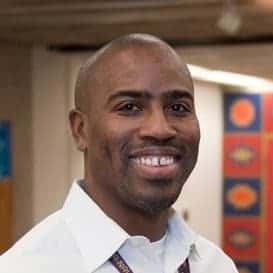
A Day In The Life of an Engineer working at Fermilab
September 20, 2021 at 1:30pm ET
About This Event
Maurice Ball is a Mechanical Engineer with a demonstrated history of working in the research industry. He started working at Fermilab as an Engineering Intern while pursuing his Master’s Degree in Mechanical Engineering at the University of Wisconsin-Madison. Currently, he is the Deputy Head of the Mechanical Support Department – Accelerator Division at Fermi National Accelerator Laboratory in Batavia, IL. The Mechanical Support Department provides mechanical engineering, installation, and operations support for the Accelerator Division, which operates, maintains, and improves the laboratory’s particle accelerator complex, beam lines and beam targets. Maurice is also Level 3 Project Manager for Building Infrastructure for Fermilab’s Proton Improvement Plan II, or PIP-II. This new project involves the construction of a new particle accelerator that will create the world’s most intense high-energy neutrino beam traveling from Illinois to the Deep Underground Neutrino Experiment (DUNE) in South Dakota – 1,300 kilometers (800 miles).
He received an Outstanding Achievement in Mentoring award at the National GEM Consortium and a Diversity Champion @ Work – an Employee Volunteer Recognition award as part of Fermilab’s Equal Opportunity & Diversity Office program and initiative.
Maurice is skilled in Engineering Management, Physics, Engineering, Fluid Cooling/Piping Systems Design, and Strategic Planning. He is also member and President of the Governing Board for the High Speed Rail Alliance. He graduated from The University of Chicago Booth School of Business’ Strategic Laboratory Leadership Program and obtained a Bachelor of Science in Mechanical Engineering at Prairie View A&M University.
Maurice Ball

Register Now
Please note the information you provide is protected by ASME’s privacy policy.
The opinions, positions, beliefs and viewpoints expressed by the webinar moderators and presenters do not necessarily reflect the opinions, positions, beliefs and viewpoints of ASME. The information presented in this webinar is provided for general information purposes only and is not intended to be a substitute for legal, engineering or other professional advice. ASME MAKES NO GUARANTEES OR WARRANTIES AS TO THE ACCURACY OR COMPLETENESS OF THE WEBINAR CONTENT OR ANY RESPONSES TO QUESTIONS POSED TO THE PRESENTER, AND MAKES NO WARRANTY OF MERCHANTABILITY OR FITNESS FOR A PARTICULAR PURPOSE. Neither ASME nor its affiliates shall be liable to any user or anyone else for any inaccuracy, error or omission, regardless of cause, in this webinar content and the response to any questions posed to the Speaker or for any damages resulting from use of any such information. ASME does not endorse the products discussed in this webinar including but not limited to any products or services offered by the speaker and/or moderator. By registering for this webinar I agree to these terms & conditions.


